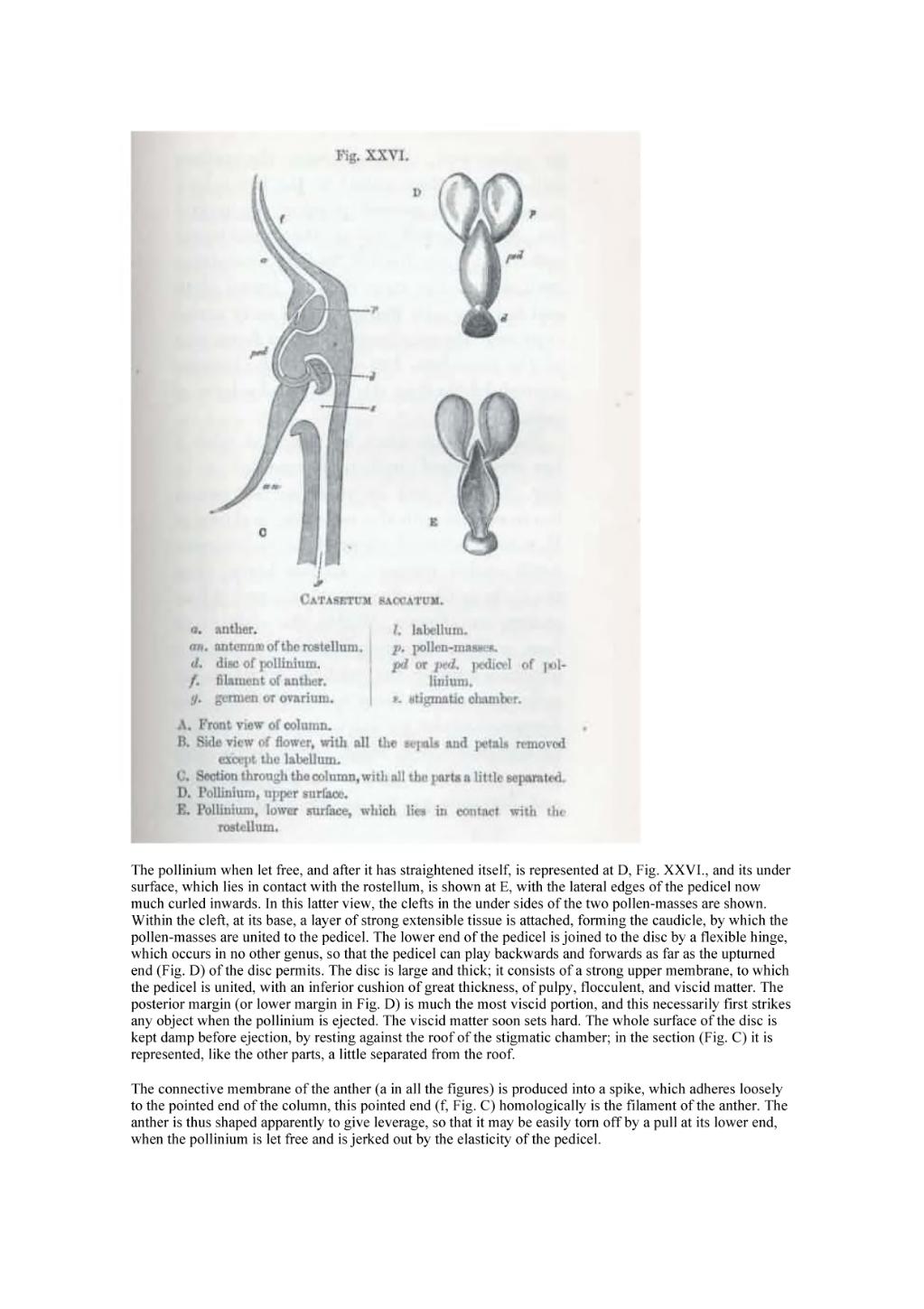An image should appear at this position in the text. To use the entire page scan as a placeholder, edit this page and replace "{{missing image}}" with "{{raw image|On the Various Contrivances by Which British and Foreign Orchids are Fertilised by Insects, and on the Good Effects of Intercrossing.djvu/61}}". Otherwise, if you are able to provide the image then please do so. For guidance, see Wikisource:Image guidelines and Help:Adding images. |
The pollinium when let free, and after it has straightened itself, is represented at D, Fig. XXVI., and its under surface, which lies in contact with the rostellum, is shown at E, with the lateral edges of the pedicel now much curled inwards. In this latter view, the clefts in the under sides of the two pollen-masses are shown. Within the cleft, at its base, a layer of strong extensible tissue is attached, forming the caudicle, by which the pollen-masses are united to the pedicel. The lower end of the pedicel is joined to the disc by a flexible hinge, which occurs in no other genus, so that the pedicel can play backwards and forwards as far as the upturned end (Fig. D) of the disc permits. The disc is large and thick; it consists of a strong upper membrane, to which the pedicel is united, with an inferior cushion of great thickness, of pulpy, fiocculent, and viscid matter. The posterior margin (or lower margin in Fig. D) is much the most viscid portion, and this necessarily first strikes any object when the pollinium is ejected. The viscid matter soon sets hard. The whole surface of the disc is kept damp before ejection, by resting against the roof of the stigmatic chamber; in the section (Fig. C) it is represented, like the other parts, a little separated from the roof.
The connective membrane of the anther (a in all the figures) is produced into a spike, which adheres loosely to the pointed end of the column, this pointed end (f, Fig. C) homologically is the filament of the anther. The anther is thus shaped apparently to give leverage, so that it may be easily torn off by a pull at its lower end, when the pollinium is let free and is jerked out by the elasticity of the pedicel.
